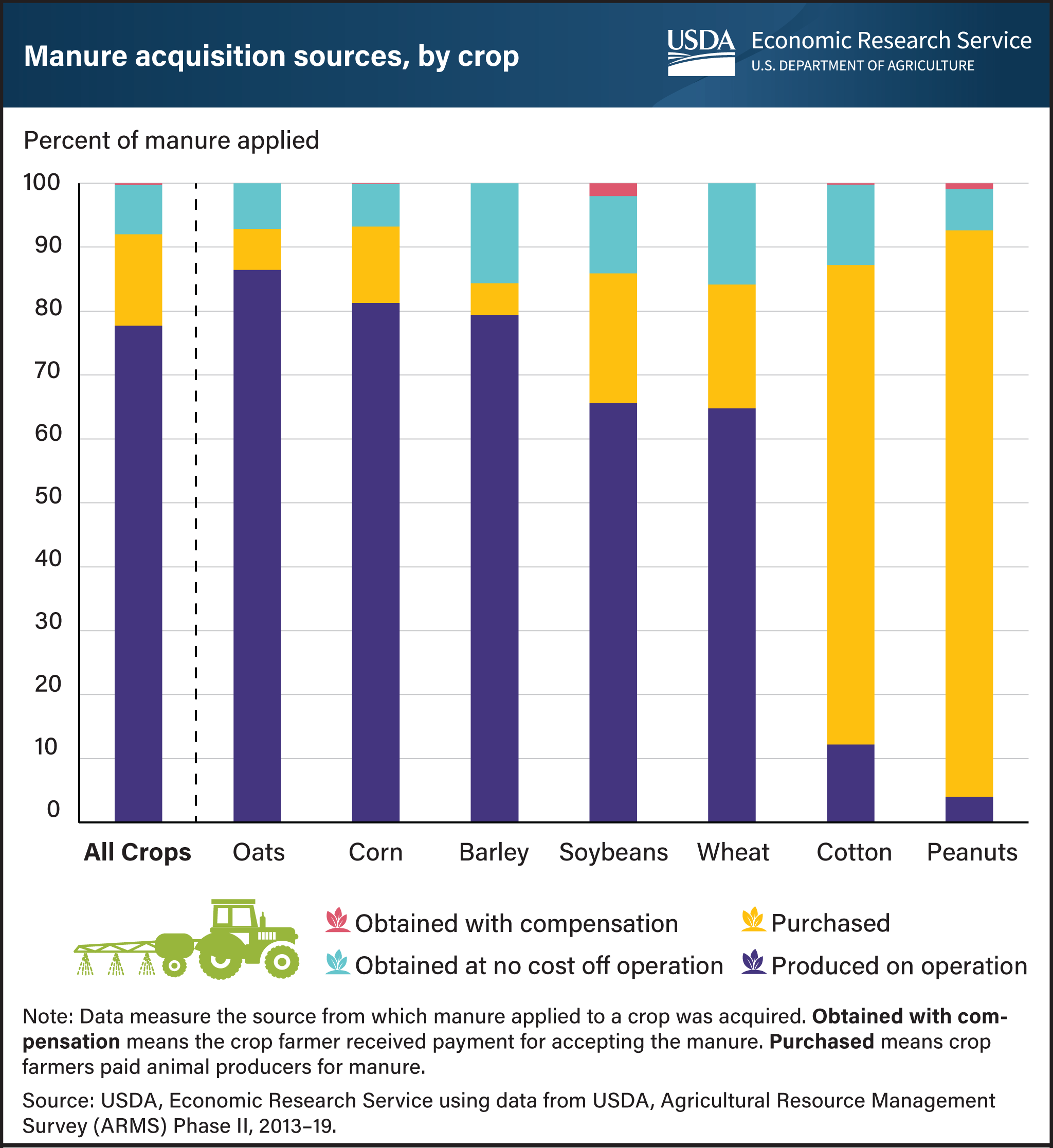Farmers mostly use manure sources from their own operations
- by Nigel Key and Laura Dodson
- 7/24/2023

In 2020, manure was applied to about 8 percent of the 240.9 million acres planted to 7 major U.S. field crops. Most manure applied to U.S. cropland (78 percent) comes from animals raised on the same operation, while 14 percent is purchased and 8 percent is obtained at no cost from other animal operations. USDA, Economic Research Service (ERS) survey data show that crop farmers received compensation from animal producers for taking manure for less than 1 percent of the manure applied, noted as “Obtained with compensation” in the chart. For most crops, farmers use manure that either comes from their own farm or at no cost from other farms. However, cotton and peanut producers are the most likely to purchase manure, typically from poultry growers. Among all animal manure types, poultry litter has the highest nutrient content, making it less costly to transport. Manure markets tend to be highly localized. When manure is obtained by a crop producer at no cost from the animal producer, that can indicate an excess supply of manure in the local area. Animal producers who apply their operations’ manure to their own crops account for a high proportion of manure used on oats, corn, and barley crops, followed by soybean and wheat. This chart appears in the USDA, ERS report Increasing the Value of Animal Manure for Farmers, published in March 2023.

